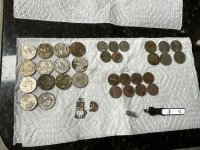Hello,
I was just wondering if anyone could explain to me what exactly the two, two digit numbers on the screen mean.
I'm used to the 1-99 on my fisher f75 and just a one tone analog tejon. So this was always kinda strange to me but I'm sure there is some description hidden in there too! Thanks for any info!
I was just wondering if anyone could explain to me what exactly the two, two digit numbers on the screen mean.
I'm used to the 1-99 on my fisher f75 and just a one tone analog tejon. So this was always kinda strange to me but I'm sure there is some description hidden in there too! Thanks for any info!






